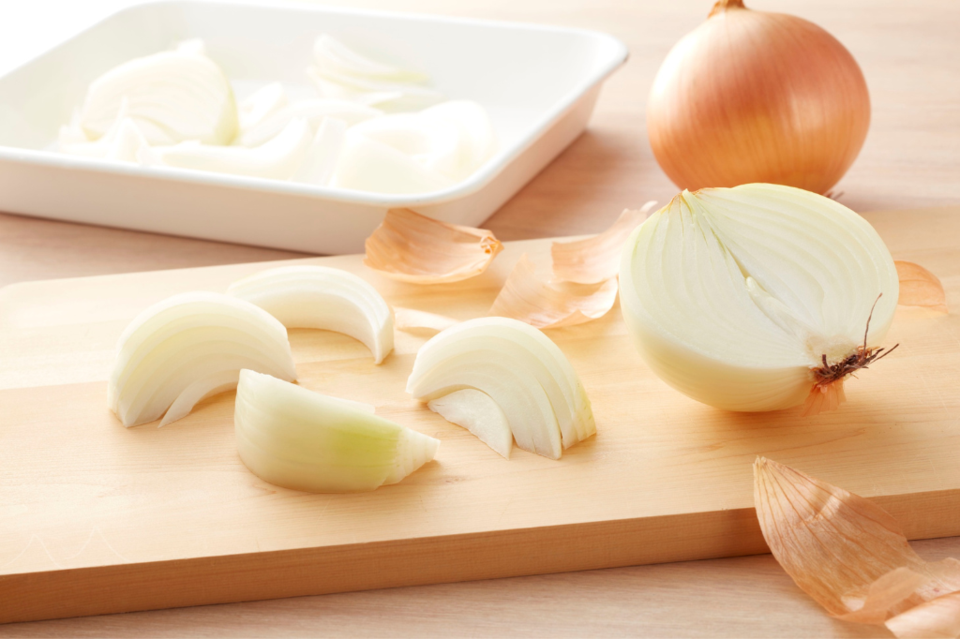If you've ever found yourself dabbing your eyes while prepping dinner, you're not alone. For generations, home cooks have shared dozens of DIY tricks to avoid crying while cutting onions—everything from putting the onions in the fridge beforehand to wearing swimming goggles at the cutting board.
But thanks to a team of physicists at Cornell University, we now have a scientifically backed answer to the age-old kitchen question: how do you cut onions without crying?
The culprit behind the tears
When you slice into an onion, it releases a compound called syn-propanethial-S-oxide. This irritant quickly turns into a gas that floats into your eyes, triggering tear ducts and the burning sensation familiar to anyone who's chopped more than a few onions.
To understand exactly how this compound is released—and how to control it—researchers turned to high-speed cameras, spray paint, and a custom-built guillotine.
The experiment
To make onion droplets easier to track, the research team coated the onions in black spray paint and used high-speed imaging to capture the exact moment the tear-inducing particles were released.
They tested a range of blade types and cutting speeds, using thin, sharp knives and thicker, duller ones. They also experimented with cutting onions both at room temperature and straight from the fridge.

What they found
The results were clear: using a sharp, thin knife and making slow, steady cuts released significantly fewer tear-inducing droplets. In fact, duller blades—especially when used at higher speeds—produced up to 40 times more particles than sharper ones. Cutting quickly didn’t help either: faster chopping led to up to four times more irritating droplets compared to a slower, gentler approach.
So why does this happen? Dull blades tend to crush and bend the onion’s skin before cutting through it, creating pressure that causes a more dramatic burst of onion juice. Sharp knives, on the other hand, slice cleanly through the layers with less trauma, meaning less juice—and fewer tears.
Chilling the myth of cold onions
If you've been refrigerating onions to reduce the sting, you may want to rethink that habit. The Cornell study found that cold onions actually released more droplets than those at room temperature, producing a “noticeably larger volume” of particles. In other words, chilling your onions may make things worse, not better.
How to cut onions without crying: what really works
Based on this new research, here are the best ways to reduce the tears when cutting onions:
-
Use a sharp, thin knife – the sharper, the better
-
Cut slowly and carefully – avoid quick, forceful chops
-
Skip the fridge – let your onions sit at room temperature
-
Keep your distance – consider using a fan if you’re extra sensitive, but focus on technique first
In short, you don’t need fancy gadgets or bizarre kitchen hacks. A well-honed knife and a little patience are all it takes to keep your eyes dry the next time you're making dinner.




